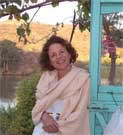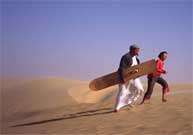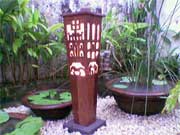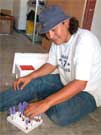This is the old Ternyata site, maintained for archival purposes. You can see the new site at http://www.ternyata.org
By Elizabeth Pisani
912 words
3 January 1990
Reuters News
(c) 1990 Reuters Limited
KUALA LUMPUR, Jan 3, Reuter - Malaysia kicks off the 1990s with a bang that it hopes will turn into a tourism boom.
The decade began with a massive midnight party in the capital to mark the start of Visit Malaysia Year.
"We're new at this game. Visit Malaysia Year is just the beginning of our move into aggressive, big-league tourism," Culture and Tourism Minister Sabbaruddin Chik told Reuters.
A multiracial country of palm-fringed beaches, virgin jungles and a rich history, Malaysia has been running an active overseas promotion campaign for the past 14 months and brought hundreds of journalists and tour operators to Malaysia.
The dapper, bespectacled Sabbaruddin says tourist arrivals in 1990 will rise 15 per cent to 4.2 million from 3.65 million in 1989. "And 4.2 million is a very conservative figure," he said. "We hope to do much better."
Tourism, already Malaysia's fifth largest foreign-exchange earner, is slated to rise to the third spot after manufacturing and commodities, although the government has set no schedule for this to happen.
Spending by tourists is expected to rise 25 per cent to 930 million dollars in 1990, and Sabbaruddin, sitting in an office littered with carved orangutan figures and pewter replicas of Kuala Lumpur landmarks, hopes related industries such as souvenirs will spread the wealth.
Some critics say Malaysia, trying to match Thailand's 1987 tourism promotion, may be too successful for its own good.
"The question everyone is asking is where are we going to put all these people," said L.K. Chung, director of Reliance Smas Tours, which brings groups to Malaysia.
Planned hotels are getting tangled in red tape, he said. "In Thailand, you ask where your tour will stay and they point at a piece of jungle. Sure enough in six months time it is a hotel. None of that here."
"We have higher safety standards here," counters Sabbaruddin and adds that some resorts in Thailand become shabby looking quickly.
He said it was inevitable that infrastructure lagged behind arrivals. "It's a chicken-and-egg situation," he said. "You can't wait until the hotel is built before you promote tourism. Unless tourists are coming, no one will build hotels."
Malaysia has 40,000 rooms in hotels that each have at least 20 rooms. Industry leaders say these are already 70 per cent taken and will be inadequate to meet demand in 1990.
Mikall Chong, honorary secretary of the Malaysian chapter of the Pacific Air Travel Association, said the private sector had not provided enough package tours to entice overseas travellers despite the government publicity campaign.
"The private sector was not convinced. It was not really following up the government's efforts with all seriousness," he said.
"There are not enough products for the potential tourist to choose. And do you see enough souvenirs?" said Chong, who cautioned that Malaysia might not be able to sustain the tourism effort because of the focus on 1990.
"All is well and good for 1990," he said. "But we are not really thinking about 1991 and 1992. The marketing strategy now should be on later years but we have no programmes beyond 1990. We are catching ourselves by our own tail."
Sabbaruddin said the 1990 calendar is dotted with festivals -- dance festivals, water festivals, kite festivals -- designed to pull tourists to far corners of the land.
"We really don't want to see tourist wealth concentrated in one or two areas. Luckily, our major client bases have different needs," said Sabbaruddin. The French and Italians go for the beaches, he said, Germans and Australians seek adventure travel. The Japanese shop.
Malaysia has it all, but suffers from an image problem.
"People think, oh, it's a Moslem country, there are lots of things we can't do," said Sabbaruddin. Alcoholic beverages are off-limits to Moslems, but they are available. "Of course we don't advertise them," he said.
"Tourism doesn't mean we welcome the bad elements. We don't want drugs, that kind of thing," he said.
He refused to say how much Malaysia was spending on Visit Malaysia Year. "Singapore cleans up its river," he says, "puts it in the tourism budget and says 'look how much we're spending.' Should we count what we spend on road-building?
"We have put a lot of time, effort and of course money into making it a success. What we spend is not important. It is the fact that we have the political will to spend on tourism that counts."
Chung said 1989's nine per cent increase in arrivals had already had an impact. "Those little people in handicrafts are not so little anymore. East Asians will spend very little on a package, but once they get here they just buy and buy and buy," Chung said.
He worried that a "shop-till-you-drop" image would damage Malaysia. "When you go to Nepal, you don't think of discos and shopping. We want people to think of Malaysia as Bor neo, jungles, rafting."
Chung said while Visit Malaysia Year went some way to promoting both aspects, it still concentrated on the bread and butter of white sand beaches and coconut palms.
"Visit Malaysia Year is a psychological thing," he said. "It drives people torwards a target, and the volume is still in the traditional markets."
|




